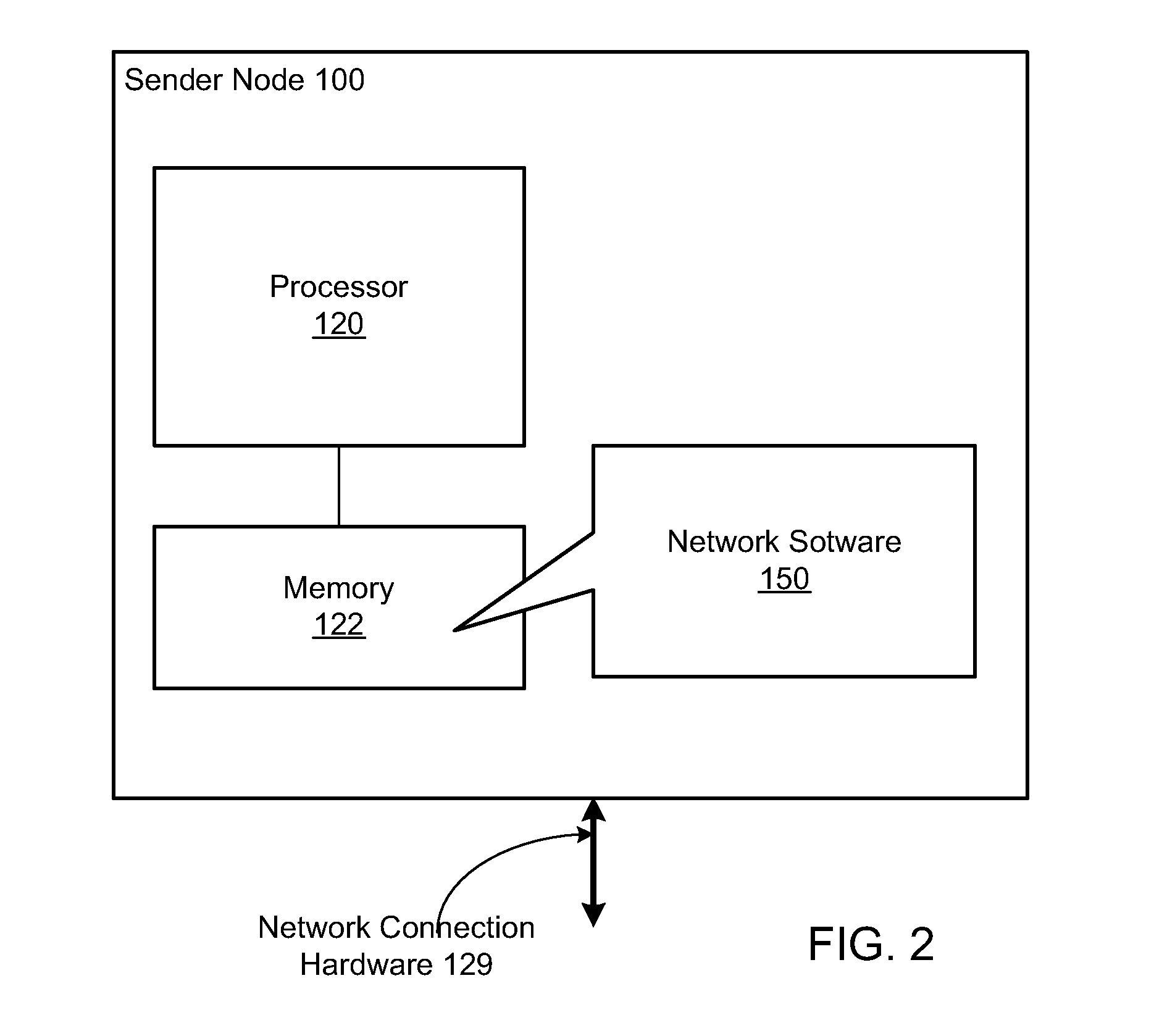Network protocol with damage loss resilient congestion control algorithm
a network protocol and congestion control technology, applied in the field of network protocols, can solve the problems of packet loss, packet loss, packet loss, etc., and achieve the effect of not distinguishing between these two different kinds of loss
- Summary
- Abstract
- Description
- Claims
- Application Information
AI Technical Summary
Problems solved by technology
Method used
Image
Examples
Embodiment Construction
[0018]Various embodiments of a system and method for adjusting a rate of sending packets over a network are disclosed herein. The system and method may utilize a network protocol which provides a congestion control algorithm that distinguishes between congestion loss and damage loss are described herein. Distinguishing between congestion loss and damage loss may enable the network protocol to reduce the rate of packet transmission when congestion loss is present but to avoid transmission rate reduction when packet loss is due to damage loss. Thus, data throughput may remain high even in the presence of significant damage loss. Various embodiments of the congestion control algorithm may also maintain fairness to network traffic sent by other nodes on the network, e.g., standard TCP traffic.
[0019]FIG. 1 illustrates a system in which a sender node 100 is coupled through a network 102 to a receiver node 104. The sender node 100 may send data packets over the network 102 to the receiver ...
PUM
 Login to View More
Login to View More Abstract
Description
Claims
Application Information
 Login to View More
Login to View More - R&D
- Intellectual Property
- Life Sciences
- Materials
- Tech Scout
- Unparalleled Data Quality
- Higher Quality Content
- 60% Fewer Hallucinations
Browse by: Latest US Patents, China's latest patents, Technical Efficacy Thesaurus, Application Domain, Technology Topic, Popular Technical Reports.
© 2025 PatSnap. All rights reserved.Legal|Privacy policy|Modern Slavery Act Transparency Statement|Sitemap|About US| Contact US: help@patsnap.com



